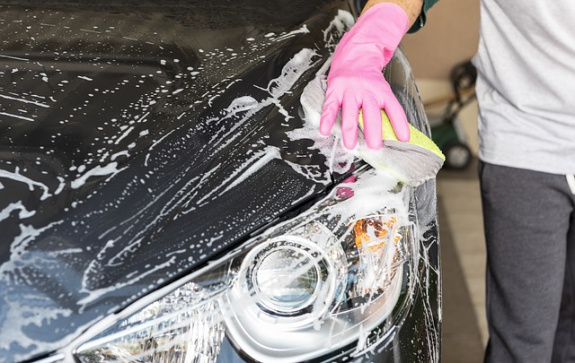Car Exterior Detailing
Car exterior detailing as a whole is all about taking care of your car exterior in great detail which means it does not only entail car washing but it may also include other processes depending on the condition of your car exterior.
Wash
Washing the car is the most basic process of car exterior detailing and the easiest to do. Some of the most common car washing method are hand washing with buckets, using a foam gun or a pressure washer. There are other car washing methods that you might like, for more details click on this link - How to wash your cars exterior. If you prefer to let a professional car wash crew or detailer to wash your car, please click on this link - Car wash near me.
Paint evaluation
There is other more complicated car detailing processes like using a clay bar, polishing, and waxing. But before you do any of those, you'll need to evaluate the car paint to determine what kind of job you'll need to perform on your car. What is the condition of the car paint?
- Is it in good condition? Light swirls, scratches, and water spots.
- Is it mildly neglected? Medium swirls, scratches, water spots, and oxidation.
- Is it severely neglected? Deep swirls, scratches, water spots, and oxidation. It seems the car is not being washed regularly.
Two ways to inspect your car: (a) look at the reflection of the sun on your car's surface to see if there are any swirls, scratches, water spots, and other contaminants; and (b) placing your hand in a plastic bag and rubbing it across the surface this will allow you to feel if the car's surface is smooth or rough.
Common car imperfections to look for: dirt or defects to look for are: finish discoloration, loss of gloss, paint bubbles, peeling paint, scratches, swirls, stains, dust, water spots, dead bugs, tree sap, bird droppings, salt, mud, brake dust, tar, grime, grit, grease and other contaminants.
Clear paint
Before polishing or filling those holes and cracks on a car's surface with wax or sealants, use a clay bar to remove the contaminants that are stuck in between those gaps.
A clay bar is much like the clay that we played with when we were kids except that the automobile clay bar is specially designed for vehicles to make sure that it won't damage the car paint
To use a clay bar, you'll also need a clay lubricant to let it slide across the car's surface safely and a clay disc as your handle.
Polish
After using the clay bar, you can start polishing the car's surface to flatten and smoothen it out. You can either polish your car by hand or by using a dual-action random orbital polisher. In both situations, you'll need to put a polisher liquid or cream on a foam pad. For more details on how to use a dual action random orbital polisher, please click on the button below.
Paint protect
After flattening out the car's surface, you'll want to apply wax or sealant to protect your car's surface from future damages. Wax or sealant also leaves your car with a shiny glossy look.
Other than that, wax or sealant prevents most contaminants from sticking and if they stick, they are easier to remove with soap.
Wheels and tires cleaning
The cleaner that you usually use for your car's surface is sometimes not strong enough to clean the dirt on your wheels and tires. This is why there are cleaners made specifically for wheels and tires. Wheel and tire cleaners are best for those people with thicker brake dust, mud, or other hard to remove contaminants on their wheels and tires. For more details on products and tools used for wheels and tires, please click on the button below.
Windows cleaning
Firstly, ammonia and alcohol-based products are not safe to use on your car's windows especially those that are tinted. To clean your car's window, we recommend using spray foam glass cleaners. Just wipe with a microfiber cloth horizontally and vertically. Don't forget to roll down the window to clean the corners and the part covered by the rubber seal and the windshield wiper blades.
Headlight restoration option
You may have noticed that headlights can become discolored, yellowish and foggy after years of use because of oxidation, UV light and other objects that hit it whenever you run the car. Because of this, the light that comes out of it becomes dull and the car isn't safe to use at night. Some people resolve this problem immediately by replacing it buying new headlights. But this can be costly, so we suggest that you consider using headlight restoration kits to restore your car's headlights. For more details on how you can do this, please click on the button below.

